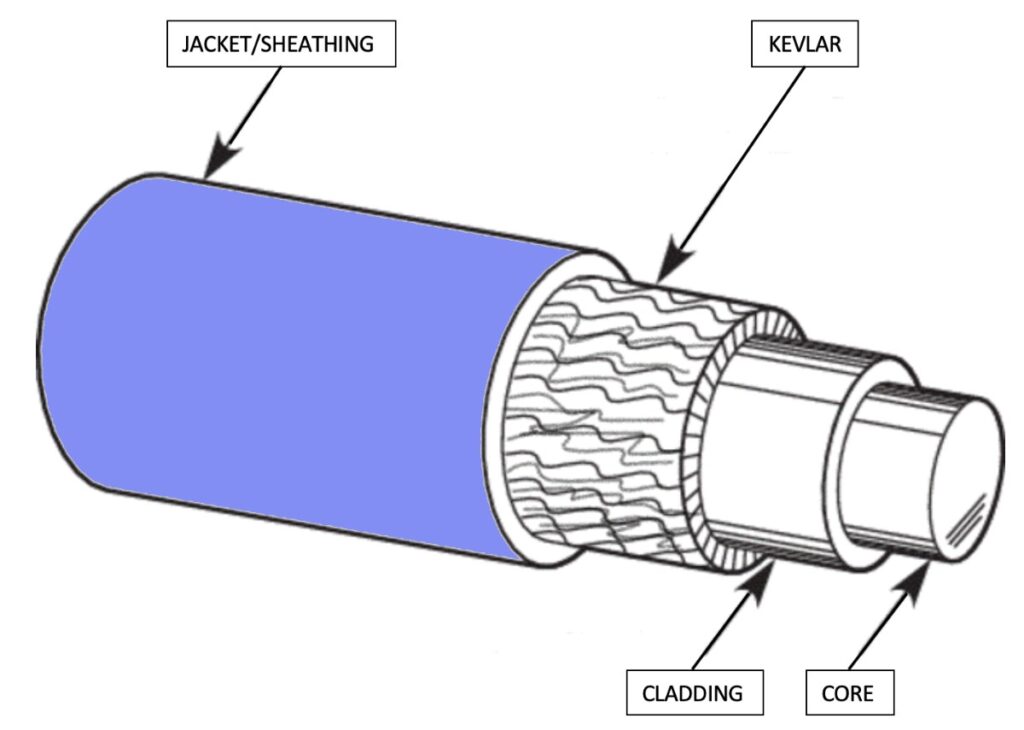Nowadays, fiber optic cables are commonly used in multiple areas, including cable television, telephone, networking and Internet technologies, automobiles, etc. Fiber optic cables appear to be a competitor to copper cables. While the wire itself is usually cheaper than a copper one, the equipment required for optic cable installation and connectors feature higher costs than traditional copper wires. Being aware of the anatomy of fiber wires is essential to figure out how they work and ensure transmission. Today, we’ll walk you through a quick guide on optical fiber components.
A fiber optic cable at a glance
Fiber optics, also known as optical fiber, are a technology that transmits data at the expense of the light that travels through a glass or plastic fiber wire. The main advantages of these cables that make them better than traditional copper cables are high bandwidth and better transmission speeds.
Furthermore, fiber optic cables stand greater protection from interference than typical metal cables since they don’t usually hold any electrical signal. In addition, fiber optic cables are commonly installed in long-distance data networking that requires good performance. Internet, television, and telephone services often implement fiber optic wires into their technologies.
Basic parts of optical fiber
Generally, a fiber optic wire construction consists of five optical fiber parts – core, cladding, coating, strengthening fibers, and a cable jacket. Keep reading to find out more about the components of optical fiber.
Core
Every fiber optic cable contains a core whose diameter is even less than a human hair. This component is essential to let optical signals travel from a light source to a receiver. Besides, a cable core is typically a strand made from plastic or high-purity glass. The larger core is inside a cable, the more significant amount of light a wire can hold, resulting in a higher capacity for data transmission.
Cladding
One of the other fiber parts is cladding – it is a thin layer that covers the core and appears as a border that incorporates the waves of light. This cable element is in charge of allowing information to travel through a wire.
Coating
Cable coating is mostly made of plastic. It is needed to cover the cladding inside a wire and strengthen the core of a fiber. The plastic coating ensures better protection of a cable in terms of curvature.
Strengthening fibers
These fiber optic cable components are crucial to prevent crushing and excess tension on a wire during an installation process. Wire strands most often serve as materials for strengthening fibers, while dark glass is sometimes added between fibers to reduce any possible cross-interactions between fibers inside a cable.
Cable jacket
One of the parts of optical fibre that is essential to prevent any outside damage is the cable jacket. This outer layer is often made from durable materials to resist moisture and chemical, flame, or mechanical hazards.

